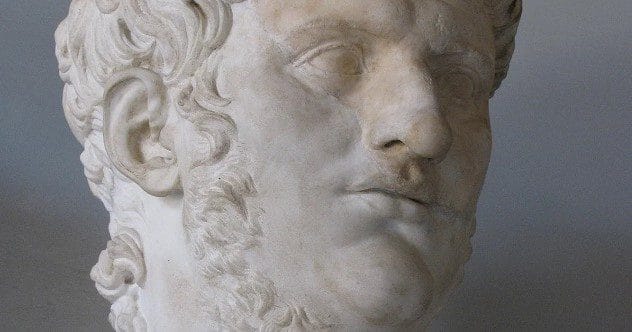Emperor Nero. The name alone often brings to mind images of a cruel tyrant, a ruler whose reign was soaked in violence and excess. While it’s true his story has dark chapters, there’s another side to Nero that often gets lost in the shadows. Believe it or not, especially in his early years as emperor, Nero showed qualities and made decisions that benefited Rome and its people. Let’s uncover 10 surprising positive aspects of Nero and his rule that you might not know.
10Nero Helped Rebuild Rome After the Fire
It might surprise you, but when the Great Fire of Rome raged in AD 64, Nero showed remarkable leadership. This massive fire destroyed large parts of the city, leaving many Romans homeless and numerous dead.
Nero was reportedly outside Rome when the fire started but returned quickly to oversee the response. Despite his later reputation for tyranny, Nero was quite generous to those who lost everything. He opened his own properties to shelter the homeless and arranged for food supplies.
After the fire, he didn’t just rebuild; he worked to improve Rome’s infrastructure. His reforms significantly enhanced the urban design of the “eternal city,” making it more organized and robust.
9Nero Set New Urban Rules for Rome

Nero is often remembered by the legend that he “fiddled while Rome burned.” However, historical accounts suggest he wasn’t even in Rome when the fire began, and this story might have been propaganda by the Senate to discredit him.
What’s certain is that after the fire devastated Rome, Nero seized the opportunity to lay down new urban planning rules. He mandated that all new buildings must be constructed from brick or stone and have tiled roofs. This was a crucial measure to prevent future large-scale fires.
He also designed wider streets and more open public spaces to improve circulation and reduce congestion. Thanks to Nero’s vision for urban planning, Rome rose from its ashes as a safer and more efficient city, proving resilient against similar disasters in its later history.
8He Significantly Lowered Taxes
During his reign, Nero undertook a major tax reform. He inherited a government burdened with significant debt. Nero believed that the best way to increase state revenue was to foster economic growth. He also aimed to win favor with the people through tax reductions, a move that naturally angered the Senate.
To achieve this, he lowered taxes for both businesses and individuals, making it easier for people to earn a living and thrive. He also initiated several public works projects. These projects not only improved infrastructure but also created jobs, giving a boost to the Roman economy.
However, after the Great Fire, Nero had to adjust his economic policies. To fund the massive rebuilding efforts, he raised taxes once again to cope with the disaster that had struck Rome.
7He Built the Biggest Roman Palace at the Time: The Golden House or Domus Aurea
Following the fire, Nero embarked on an ambitious building program, commissioning many new public structures and monuments. The most astounding of these was the Golden House, or Domus Aurea. This lavish palace stood as one of the most luxurious edifices ever constructed in Rome.
Nero was indeed an ambitious builder, and his constructions left a lasting mark on the city. The Domus Aurea was a colossal complex built on land that had been cleared by the fire. This was a controversial move, as some saw it as Nero taking advantage of a tragedy for personal extravagance.
The palace quickly became a sensation in Rome. While some contemporaries lauded Nero for his bold vision and engineering skill, others criticized him as a megalomaniac. They argued he had wasted public money on an opulent personal project when the city had other pressing needs.
6Nero Relentlessly Promoted Artistic Expression
Nero was also a significant patron of the arts. He actively encouraged artistic expression and provided support to many artists throughout his reign. What’s more, he was an artist himself, composing music and poetry. Shockingly for the Roman elite, he even performed publicly for the people and senators!
Though some accounts suggest he compelled audiences to attend his performances, others acknowledged his genuine musical and poetic talents. During his rule, he commissioned numerous artworks from the era’s most celebrated artists, including a massive statue of himself known as the Colossus of Nero.
Nero may have been a complex and often cruel ruler, but his passion for the arts was undeniable. Even at the moment of his death, his reported last words were: “Qualis artifex pereo!” or “What an artist dies in me!”
5Nero Backed and Encouraged Athletic Events
Nero was a great enthusiast of athletics and did much to support and promote athletic events. He even participated as a charioteer himself and famously won a chariot race at the Olympic Games. Of course, it’s widely believed he cheated, as few would dare to actually defeat the emperor.
Regardless of how he won, Nero was a capable athlete, a rare claim for a ruler. Beyond his own participation, he genuinely enjoyed watching sports. He consistently promoted athletic competitions and highlighted their importance in Roman society. This imperial backing led to a flourishing of events like chariot races, with arenas regularly filled by enthusiastic crowds during his reign.
4Nero Allowed Slaves to Complain Against Their Master
In ancient Rome, slavery was an embedded part of life. Slaves performed tasks ranging from hard manual labor to providing entertainment, and they possessed very few rights. However, under Emperor Nero’s rule, a significant change occurred: slaves were permitted to file official complaints against their masters if they were mistreated.
This might seem like a minor reform today, but it was a major step forward for slave rights at the time. Before Nero, slaves had no legal way to seek justice if they suffered severe abuse from their owners. By allowing them to lodge complaints, Nero offered a measure of protection from abuse and gave them a previously unheard voice in Roman society.
This policy helped to improve the status of slaves within Roman society and laid some groundwork for future reforms concerning their treatment.
3Millions of People Loved Him… Even After His Death!
Despite his notorious reputation, especially among the senatorial class, Nero was a popular ruler for many ordinary Roman citizens. Millions of people reportedly loved him, largely because he was known for his generosity towards them and his role as a great entertainer.
Nero often distributed money to the poor and provided aid to those in need. This largesse towards the common people contrasted sharply with the Senate’s view of him. Many senators hated him, believing he was excessively wasteful with public funds—an accusation that held some truth.
Nero frequently demanded more money from the Senate, expecting them to yield to his desires. Consequently, the Senate viewed Nero as a threat to their authority, their wealth, and the overall stability of Rome. Yet, in the eyes of much of the public, he remained a popular figure, even after his death when some still mourned him.
2Nero Enhanced the Greek Culture
As an artist and a performer, Nero held a deep appreciation for Greek culture. He actively worked to promote and enhance its influence in Rome. He patronized Greek scholars, inviting them to Rome, and commissioned numerous copies of famous Greek statues.
Nero’s admiration for Greek aesthetics was also evident in his architectural projects, most notably his Domus Aurea. This grand palace incorporated various elements from both Roman and Greek architectural traditions. By skillfully blending the finest aspects of both cultures, Nero created settings that were both unique and breathtaking.
There’s no question that Greek culture profoundly shaped Nero’s life and reign. As emperor, he ensured that Greece remained a valued part of the Roman Empire, and under his rule, the influence of Greek art, philosophy, and culture in Rome continued to grow significantly.
1His Diplomatic Abilities Ended the War Against the Parthian Empire
Beyond his artistic pursuits and sometimes erratic behavior, Nero also possessed a sharp political mind. He was often capable of skillfully negotiating peace agreements with Rome’s adversaries. One of his most significant diplomatic achievements was settling the long-standing conflict with the Parthian Empire over control of Armenia.
Nero’s early reign saw a period of relative peace and prosperity, partly due to his successful diplomatic efforts with the Parthians, whose empire stretched across modern-day Iran, Afghanistan, and Turkey. The Parthians posed a major threat to Roman territories in the East. Nero understood that finding a peaceful resolution was in Rome’s best interest.
He sent envoys to the Parthian court, where they successfully negotiated a peace treaty. This treaty secured the Armenian frontier and allowed Rome to redirect its military resources to other regions, such as expanding its territories in Britannia. As a result, Nero’s diplomatic success marked a crucial period for the Roman Empire, contributing to its power and stability.
Nero’s reign is undoubtedly complex. While stories of his cruelty and excesses are widely known, these positive aspects offer a more rounded view of the man and the emperor. He was a figure of immense contradictions, capable of both great generosity and terrible acts.
What do you think about these less-discussed aspects of Nero’s rule? Were any of these points surprising to you? Share your thoughts and insights in the comments below!










